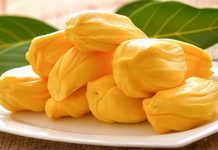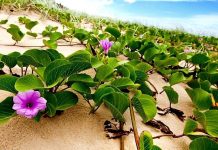Scientific name: Cocos nucifera L.
Family: Arecaceae
Synonym: Cocos indica Royle
Bengali/Vernacular name: Narikel, Dab (Bengali); Naiyl (Noakhali).
Tribal name: Nariul (Chakma), Ongci (Chak), Kikuii (Khumi), Own-ui (Murang), Lukluk (Pangkhoa), Unn-sthei (Rakhaing), Nakul (Tanchangya).
English name: Coconut.
Description of the plant: A tall perennial palm, trunk single, grey, round, straight, ringed, 10-30 m tall. Leaves large, 1.8-4.5 m long, pinnatisect; leaflets linear-lanceolate. Spadix 1.2-1.4 m long, stout, androgynous, simply panicled. Lower spathes 60-90 cm long, oblong, hard, spliting lengthwise. Fruit obovoid, 3-gonous, green or yellowish, 20-30 cm long, covered with a tough fibrous husk, brown endocarp with 3 basal pores, the large cavity filled with a sweet fluid, 1-seeded, seed cohering with the endocarp.

Plant parts used: Root.
Medicinal uses: The infusion of the young roots is used as gargle
for sore throat.
The decoction of root promotes flow of urine.
Ash made from roots of the plant is used for several days to reduce the
toothache.
Root juice is taken for the treatment of prostate gland enlargement
Distribution: Cultivated throughout Bangladesh.
Is this plant misidentified? If yes, please tell us….














